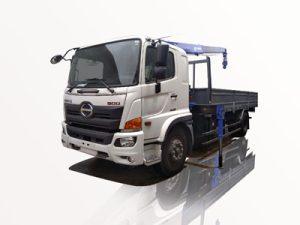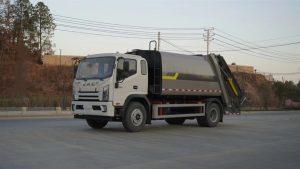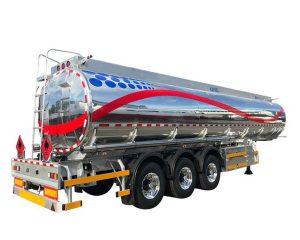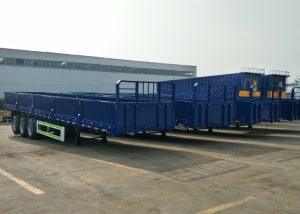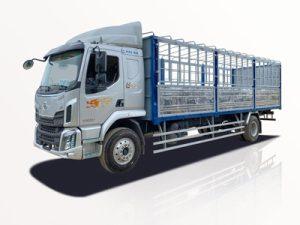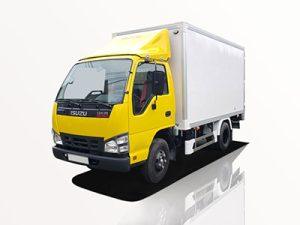Monday to Saturday - 8:00 -17:30
Understanding Attenuator Truck Crashes: Causes, Consequences, and Prevention
Introduction
Attenuator truck crashes have become a significant concern on highways and roadways across the world. These specialized vehicles, equipped with impact-absorbing devices, are designed to reduce the severity of crashes and protect both workers and motorists. However, as traffic increases and roadwork becomes more prevalent, the frequency of attenuator truck crashes has risen, leading to serious injuries and fatalities. In this article, we will explore the causes, implications, preventive measures, and best practices surrounding attenuator truck crashes, providing a comprehensive understanding of this critical issue.
What is an Attenuator Truck?
Attenuator trucks, also known as crash trucks, are specialized vehicles used primarily in roadwork zones. Their main purpose is to act as a buffer between ongoing construction activities and moving traffic. Equipped with energy-absorbing devices, attenuator trucks are designed to absorb the force of a collision, thus minimizing the impact on the driver and any workers in the vicinity.
Types of Attenuators
There are several types of attenuators that can be found on these trucks:
- Trailer-Mounted Attenuators: These devices are portable and can be easily moved from one site to another.
- Truck-Mounted Attenuators: Built into the truck itself, these are more permanent and provide better structural integrity.
- Barrier-Type Attenuators: These are designed to absorb impacts while also preventing vehicles from breaching the work area.
Why do Attenuator Truck Crashes Occur?
Common Causes of Crashes
Understanding the causes of attenuator truck crashes is essential for developing effective prevention strategies. Some common causes include:
- Driver Inattention: Distractions can lead to delayed reactions, resulting in crashes.
- Speeding: Drivers exceeding speed limits or not adjusting their speed for road conditions increase the likelihood of a crash.
- Impaired Driving: Alcohol and drugs significantly impair a driver’s judgment and reaction time.
- Poor Weather Conditions: Rain, fog, and snow can hinder visibility and vehicle control, leading to accidents.
- Fatigue: Tired drivers may not respond adequately to changing traffic conditions.
Environmental Factors
In addition to driver behavior, environmental factors also play a significant role in attenuator truck crashes. These may include:
- The presence of construction zones that can confuse or distract drivers.
- Road design that does not accommodate safe navigation around work zones.
- Obstructions that block visibility of the attenuator truck or the construction area.
The Consequences of Attenuator Truck Crashes
Impact on Drivers
The consequences of attenuator truck crashes can be devastating for drivers. When impacted by inattentive drivers or inclement weather conditions, these accidents can result in:
- Severe Injuries: Victims may suffer from traumatic brain injuries, spinal injuries, and other life-threatening conditions.
- Fatalities: In some cases, the force of the collision can lead to life-threatening injuries and death.
- Emotional Trauma: Survivors of crashes often experience long-term psychological effects, including PTSD.
Impact on Workers
Workers operating near attenuator trucks are also at risk. Crashes can lead to:
- Injuries or Fatalities: Workers may be struck by vehicles that fail to stop in time.
- Increased Work Zone Hazards: Crashes can create additional dangers, such as debris and hazardous materials on roadways.
Legal Implications of Attenuator Truck Crashes
Liability Issues
In the event of an attenuator truck crash, legal implications often arise. Factors influencing liability may include:
- Driver Negligence: If a driver is found responsible for the crash, they may face lawsuits and monetary penalties.
- Employer Liability: Employers may also be held accountable for their employee’s actions or for inadequate training on safely navigating work zones.
- Government Liability: In cases of poor road conditions or unclear signage, governmental bodies may also face litigation.
Insurance Considerations
Insurance plays a critical role in handling the aftermath of attenuator truck crashes. Key points include:
- Coverage Requirements: Drivers involved in such crashes must ensure they comply with state-mandated insurance requirements.
- Claim Process: Understanding how to file claims with insurance companies can ease recovery efforts for victims and their families.
Preventing Attenuator Truck Crashes
Education and Training
One of the most effective ways to prevent attenuator truck crashes is through education and training programs for drivers and workers involved in road construction. Suggested practices include:
- Defensive Driving Courses: These courses teach strategies to avoid potential hazards on the road.
- Worker Safety Training: Ensure workers are aware of safety practices while working near traffic.
Enhanced Road Signage and Marking
Clear and visible signage can help guide drivers through work zones more safely. Recommendations include:
- Installing advanced warning signs well before construction areas.
- Using reflective materials to increase visibility, especially at night.
Best Practices for Road Construction Zones
Implementing Safety Protocols
Safety protocols can enhance protection for both workers and drivers. Key protocols include:
- Proper Placement of Attenuator Trucks: Ensure they are positioned correctly to serve as effective barriers.
- Routine Maintenance: Regular checks of vehicles and equipment can prevent malfunctions and enhance safety.
Utilizing Technology
Employing technology can also improve safety around attenuator trucks. Consider the following innovations:
- Traffic Management Systems: Use real-time traffic data to inform drivers about construction zones.
- Automated Warning Systems: Consider systems that alert drivers as they approach work zones.
Real-World Examples of Attenuator Truck Accidents
Case Study: Highway Construction Zone Collision
A notable incident in 2021 involved a speeding vehicle crashing into an attenuator truck on a busy highway. The result was severe injuries to the driver and significant damage to both vehicles. Following the incident, the construction company implemented new safety protocols to improve worker protection.
Case Study: Fog-Induced Attenuator Crash
In another case, dense fog led to a collision with an attenuator truck where visibility was drastically reduced. The incident prompted local authorities to enhance road signage and public awareness about passing construction zones in adverse weather conditions.
FAQs
What is the role of an attenuator truck?
An attenuator truck serves as a buffer between moving traffic and roadwork areas, absorbing the impact of crashes to protect workers and drivers.
How can drivers improve safety around attenuator trucks?
Drivers can improve safety by adhering to speed limits, staying attentive, and being cautious in construction zones where attenuator trucks are present.
What should be included in a safety training program for workers?
A safety training program should cover defensive driving, awareness of road conditions, communication protocols among workers, and proper positioning of attenuator trucks.
Are there regulations governing attenuator truck use?
Yes, various federal and state regulations outline the requirements for attenuator truck specifications, placement, and operation in work zones.
What are common injuries associated with attenuator truck crashes?
Common injuries include traumatic brain injuries, spinal injuries, broken bones, and soft tissue injuries. The severity often depends on collision speed and impact force.
How can technology help prevent attenuator truck crashes?
Technology can help by implementing real-time traffic management systems, automated warning signals, and advanced signage to better inform drivers about road conditions and construction zones.


